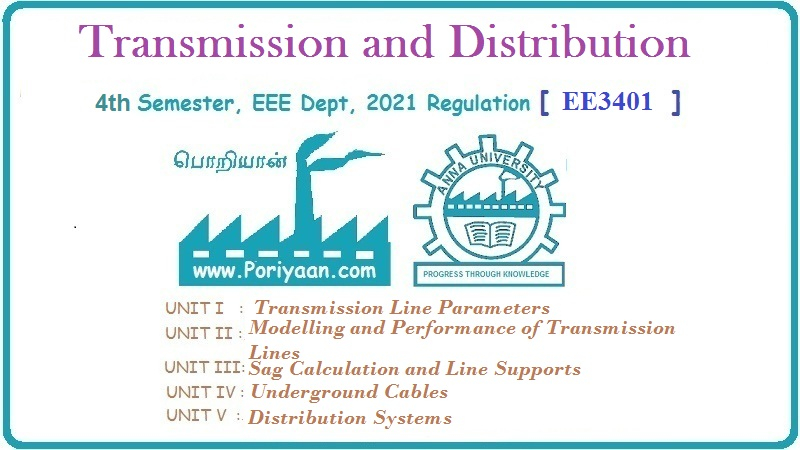Transmission and Distribution: Unit II: (a) Modelling and Performance of Transmission Lines
Ferranti Effect
It can be seen that for a long transmission line under no load conditions, the voltage at receiving end is more than that at sending end because of the effect of the line capacitance.
Ferranti Effect
It can be seen that for a long
transmission line under no load conditions, the voltage at receiving end is
more than that at sending end because of the effect of the line capacitance.
This is called Ferranti effect. This can be explained by various ways.
In case of long transmission line, we have
studied the equation for VS given by,

A general expression for VS is
obtained by considering IR = 0 as the line is at no load.

From the above expression it can be seen
that there are two components of voltages. One is increasing exponentially
while the other is decreasing exponentially. At l = 0 both the
components reduce to VR / 2 so the total voltage is VR.
The variation of these components is shown in Fig. 2.21.1.

As the length I increases component VR
/ 2 eαl 1 increases exponentially and subtends an angle of βl
and is represented by phasor OC. The other component VR / 2 e-αl
decreases exponentially and phasor rotates through a negative angle
of βl as given by phasor OD. The phasor sum of this two components is VS
which can be seen to be less than VR from geometry from magnitude
point of view.
Another simpler explaination can be
given on the basis of approximation of transmission line model by lumping its
inductance and capacitance and neglecting resistance as shown in Fig. 2.21.2.

From the network we have

Here L and C are inductance and
capacitance of line per unit length and I is total length of the line.
Normally capacitance of line is small
compared to inductance. Hence XC is more than XL. So
neglecting XL we get

The Ferranti effect can also be
explained on the basis of net reactive power flow in the line. If a reactive
power generated at a point is more than the reactive power absorbed the voltage
at that point becomes higher than its normal value. The inductive reactance
absorbs the reactive power whereas the capacitances generate reactive power.
Under light load conditions or no load conditions the capacitance associated
with the line generate more reactive power than the reactive power which is
absorbed hence the voltage at the receiving end is found to be greater than
that at sending end.
Review Question
1. Explain the ferranti effect with a phasor diagrams and its causes.
Transmission and Distribution: Unit II: (a) Modelling and Performance of Transmission Lines : Tag: : - Ferranti Effect
Related Topics
Related Subjects
Transmission and Distribution
EE3401 TD 4th Semester EEE Dept | 2021 Regulation | 4th Semester EEE Dept 2021 Regulation
